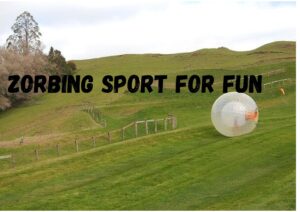When it comes to spending time with children, engaging in games offers a wonderful opportunity to create lasting memories while promoting their physical, cognitive, and social development. In this comprehensive guide, we will delve into 48 diverse and interactive games that parents, guardians, and caregivers can enjoy with children. From indoor brain-teasers to outdoor escapades, these games have been carefully curated to combine laughter, imagination, and learning. Lets have a look at the various games to play with a child.
Indoor Games to Play with a Child
1. Hide and Seek
Hide and Seek is a timeless favorite that not only provides hours of enjoyment but also enhances cognitive skills. One child hides while the others count, and then they set out to locate the hidden child. This game sharpens observation skills as children learn to look for creative hiding spots. Additionally, teamwork is fostered as children collaborate in the search for their hidden playmate.
2. Board Games
Board games such as Candy Land, Chutes and Ladders, and Monopoly Junior offer structured entertainment that also cultivates strategic thinking, planning, and social interaction. These games involve rules and gameplay, helping children grasp the concept of turn-taking, patience, and understanding rules. Furthermore, navigating the game board and making decisions contributes to critical thinking development.
3. Puzzles
Puzzles are not just a source of enjoyment; they serve as powerful tools for cognitive development. Jigsaw puzzles, for instance, engage children’s spatial reasoning skills as they manipulate pieces to fit together. The process encourages problem-solving and patience. By selecting puzzles with varying levels of complexity, caregivers can tailor the challenge to the child’s cognitive abilities, ensuring a sense of accomplishment upon completion.
4. Simon Says
Simon Says is a game that sharpens listening skills and encourages obedience while being incredibly enjoyable. One child assumes the role of “Simon” and issues commands. However, the catch is that the commands are only valid if they start with the phrase “Simon says.” Children must follow these commands promptly, promoting attentive listening and quick thinking. This game is particularly effective in developing concentration and enhancing the child’s ability to follow instructions accurately.
5. Dress-Up
Dress-Up is an avenue for creative expression and imaginative play. Children explore their creativity by donning different costumes and role-playing as various characters. Whether they become pirates, astronauts, or princesses, this game promotes storytelling, empathy, and social interaction. By embodying different roles, children develop a deeper understanding of diverse perspectives and personalities.
6. Building Blocks
Building blocks are more than just toys; they facilitate the development of fine motor skills, spatial awareness, and engineering thinking. Children construct structures using blocks, experimenting with balance, height, and stability. This hands-on exploration promotes critical thinking as they analyze cause-and-effect relationships and problem-solve when structures collapse. Building with blocks also nurtures creativity as children experiment with different configurations.
7. Arts and Crafts
Arts and crafts projects encourage children to express themselves creatively while developing fine motor skills. Drawing, coloring, painting, and crafting involve precise hand movements, improving hand-eye coordination. Moreover, arts and crafts foster individuality and self-expression, allowing children to communicate their thoughts, emotions, and ideas visually. Collaborative projects also nurture teamwork and compromise when working with others.
8. Cooking/Baking
Cooking or baking with children goes beyond the kitchen—it’s an opportunity to teach valuable life skills while creating delicious treats. Measuring ingredients, following recipes, and observing chemical reactions during baking all contribute to cognitive development. Additionally, the sense of achievement gained from creating something tangible can boost children’s confidence and self-esteem.
9. Paper Airplane Contest
The Paper Airplane Contest transforms origami into a competitive and educational activity. Children learn about aerodynamics and design principles as they fold and modify paper airplanes. Once the planes are ready, they engage in friendly competition to see whose design can achieve the longest flight or perform the most impressive tricks. This game encourages experimentation, problem-solving, and a touch of friendly rivalry.
10. Sock Puppet Theater
Sock Puppet Theater is a delightful way to nurture storytelling, creativity, and communication skills. Children create puppet characters using old socks and bring them to life through imaginative performances. As they craft dialogues and scenarios, they develop their narrative skills and hone their ability to convey emotions and ideas. This game encourages children to think critically about character development and plot structure.
11. Storytime
Storytime is not just about reading words on a page—it’s an opportunity to foster a love for literature and imagination. By engaging in interactive reading, caregivers and children can explore the story’s themes, characters, and plot together. Encourage discussions about the story’s events, predictions, and possible outcomes. This activity not only enhances vocabulary but also nurtures the child’s ability to think critically and make connections.
12. Memory Game
The Memory Game is an entertaining way to sharpen memory and cognitive skills. Lay out pairs of cards face-down and take turns flipping them over to find matching pairs. As children try to remember the positions of the cards, they enhance their memory capacity and concentration. This game also reinforces the importance of focus and observation in problem-solving.
13. I Spy
I Spy is a game of observation and deduction that engages children’s minds while promoting interaction. One participant secretly selects an object in the environment and provides descriptive clues without revealing its identity. Other players then guess the object based on the given clues. This game enhances vocabulary, deductive reasoning, and visual perception.
14. Balancing Game
The Balancing Game is an indoor activity that fosters motor skills and balance development. Using a high ground, a log of wood, or even colored tape on the floor, children practice walking along the designated path on one leg or both. This game enhances physical coordination, concentration, and stability. It’s not only a fun challenge but also a way to build core strength and body awareness.
15. Card Games
Card games like Go Fish, Crazy Eights, and Cards and Spoons are not only enjoyable but also enhance logical reasoning and number/color recognition. In Go Fish, players ask each other for specific cards to complete pairs. Crazy Eights involves matching cards based on numbers or suits, while Cards and Spoons requires quick reflexes to grab a spoon when a certain combination of cards is achieved. These games develop strategy, memory, and social interaction skills.
16. Reading
Reading together with children provides a shared experience that goes beyond the story itself. Engage with the illustrations, ask questions about characters’ motives, and predict the story’s progression. Encourage the child to articulate their thoughts and feelings about the story. This activity promotes vocabulary development, comprehension skills, and critical thinking.
Outdoor Games to Play with a Child
17. Tag
Tag is a classic outdoor game that combines physical activity with social interaction. One participant is designated as “It” and must chase and tag the other players. Once tagged, a player becomes the new “It.” This game promotes cardiovascular fitness, gross motor skills, and cooperative play. Tag encourages children to stay active while having fun.
18. Hide and Seek (Outdoors)
Taking the classic indoor game of Hide and Seek outside adds an element of exploration and adventure. The open space allows for more creative hiding spots and increases the excitement. Children take turns hiding while the others seek, and the game encourages physical activity, spatial awareness, and problem-solving as they choose their hiding spots.
19. Hopscotch
Hopscotch is a sidewalk game that combines physical movement with a touch of competition. Draw a hopscotch grid on the ground with chalk, featuring numbered squares. Players take turns tossing a marker onto the grid and then hop through it, avoiding the square with the marker. This game promotes balance, coordination, and counting skills, making it an ideal outdoor activity for energetic children.
20. Sidewalk Chalk Art
Sidewalk Chalk Art transforms outdoor spaces into vibrant canvases for creativity. Children can draw pictures, create colorful patterns, or even design obstacle courses using chalk. This activity nurtures artistic expression, spatial thinking, and fine motor skills. Collaborative chalk art sessions also encourage teamwork and cooperation.
21. Nature Scavenger Hunt
Nature Scavenger Hunts introduce children to the wonders of the natural world while honing their observational skills. Provide a list of items to find, such as leaves, rocks, flowers, or specific types of plants. As children search for these items, they learn about the environment, develop attention to detail, and enhance their curiosity about the world around them.
22. Bike Riding
Bike Riding is an outdoor activity that promotes physical fitness and coordination. Teach children how to ride a bike and explore your surroundings together. As they master pedaling, steering, and balancing, they develop gross motor skills and gain a sense of independence and adventure.
23. Jump Rope
Jump Rope is a classic outdoor game that not only provides cardiovascular exercise but also challenges coordination and rhythm. Skipping rope individually or with friends enhances agility, balance, and endurance. Experiment with different jumping styles, such as hopping on one foot or crossing the rope, to add variety and excitement.
24. Nature Exploration
Nature Exploration encourages children to connect with their environment through observation and inquiry. Venture outdoors to investigate plants, insects, animals, and other natural elements. Encourage children to ask questions, make hypotheses, and draw conclusions based on their findings. This activity fosters curiosity, critical thinking, and a deeper appreciation for nature.
25. Treasure Hunt
Treasure Hunts add an element of mystery and excitement to outdoor play. Create a treasure map with clues leading to hidden items or prizes. As children follow the clues and search for the hidden treasures, they practice problem-solving, deductive reasoning, and teamwork. This game cultivates a sense of adventure and exploration.
Educational and Imagination Games to Play with A Child
26. Math Bingo
Math Bingo combines learning with entertainment by incorporating math problems into a familiar game format. Create bingo cards with math equations, and call out the answers for players to mark on their cards. This game reinforces arithmetic skills while encouraging concentration and pattern recognition.
27. Alphabet Scavenger Hunt
The Alphabet Scavenger Hunt is a creative way to reinforce letter recognition and language skills. Provide a list of letters and have children find objects in the environment that start with each letter. This game promotes observation, vocabulary development, and an understanding of letter-sound relationships.
28. Flashcard Quizzes
Flashcard Quizzes are a versatile tool for learning and review. Use flashcards with numbers, letters, shapes, or vocabulary words. Ask questions or challenge children to match cards with corresponding items. Flashcard Quizzes stimulate memory, quick thinking, and knowledge retention.
29. Story Building
Story Building invites children to unleash their imagination and creativity. Collaboratively create a story by taking turns adding sentences. This activity nurtures storytelling skills, language development, and cooperation as children build upon each other’s ideas.
30. Science Experiments
Science Experiments provide hands-on learning experiences that ignite curiosity and critical thinking. Conduct simple experiments using household items to explore concepts like chemical reactions, states of matter, or the power of air pressure. These experiments encourage children to formulate hypotheses, make observations, and draw conclusions.
31. Geography Guessing Game
The Geography Guessing Game is an interactive way to introduce children to the world’s countries and continents. Name a country, and have children point to it on a map or globe. This game enhances geography knowledge, spatial awareness, and fine motor skills as children locate and identify places.
32. Tea Party
The Tea Party game encourages imaginative play and social interaction. Host a pretend tea party with stuffed animals or dolls as guests. Children practice role-playing, etiquette, and communication as they engage in creative conversations and interactions.
33. Superhero Play
Superhero Play transforms children into imaginative characters with incredible powers. Encourage them to invent their own superhero personas, complete with unique abilities and backstories. This game promotes creative thinking, narrative development, and self-expression as children create and explore their superhero worlds.
34. Pretend Store
Pretend Store is an opportunity to introduce children to basic concepts of commerce while fostering social and cognitive skills. Set up a play store with items to “buy” and “sell.” Children take on roles as customers and shopkeepers, promoting role-playing, negotiation, and mathematical reasoning.
35. Space Adventure
Space Adventure lets children explore the cosmos through their imagination. Embark on an imaginary journey to distant planets, galaxies, and beyond. This game encourages creative thinking, curiosity about the universe, and storytelling skills as children describe their cosmic adventures.
36. Doctor/Hospital Play
Doctor/Hospital Play is a game that introduces children to the world of healthcare in a gentle and reassuring way. Children take turns being patients and doctors, examining and treating “ailments.” This game promotes empathy, communication skills, and a positive perspective on medical environments.
Music and Movement Games to Play with a Child
37. Dance Party
Dance Party is an exhilarating activity that combines movement with musical expression. Play upbeat music and encourage children to dance freely. This game promotes physical activity, coordination, and self-confidence as children explore different dance styles and movements.
38. Musical Chairs
Musical Chairs is a lively game that challenges children’s speed and timing. Set up chairs in a circle, with one fewer chair than the number of players. Play music and have children walk around the chairs. When the music stops, they must quickly find a chair to sit in. This game enhances listening skills, reaction time, and adaptability.
39. Freeze Dance
Freeze Dance is a dynamic game that encourages children to move and groove. Play music and have children dance energetically. When the music stops, they must freeze in place until the music resumes. This game promotes rhythm, self-expression, and the ability to follow auditory cues.
40. Follow the Leader
Follow the Leader is an interactive game that fosters movement and coordination. Designate one child as the leader and have others mimic their actions and movements. The leader can incorporate a variety of activities, from dancing and jumping to imitating animal movements. This game enhances motor skills, concentration, and social interaction.
41. Hot Potato
Hot Potato is a fast-paced game that adds an element of excitement to group play. Children sit in a circle and pass an object, such as a ball or a small toy, while music plays. When the music stops, the child holding the object is “out.” This game encourages anticipation, cooperation, and laughter as children try to avoid being caught with the “hot potato.”
42. Children’s Yoga
Children’s Yoga introduces mindfulness and physical activity in a playful manner. Lay out a carpet or yoga mat and use pictures or videos to guide children through simple yoga poses. This game enhances flexibility, balance, and body awareness while teaching relaxation techniques. Encourage children to emulate the poses and engage in mindful breathing.
Classic Games to Play with a Child
43. Snakes and Ladders
Snakes and Ladders is a classic board game that combines luck and strategy. Players roll dice, move along the board, and climb ladders while avoiding snakes that send them backward. This game promotes counting, number recognition, and decision-making as children strategize their moves.
44. Rock, Paper, Scissors
Rock, Paper, Scissors is a decision-making game that uses hand gestures to represent different elements. Rock beats scissors, scissors beats paper, and paper beats rock. Children make simultaneous hand gestures to choose their element. This game fosters quick thinking, prediction, and understanding of basic rules.
45. Chess
Chess is a timeless game that enhances logical thinking and strategic planning. Players engage in a battle of wits, moving pieces strategically to capture the opponent’s king. This game promotes problem-solving, critical thinking, and foresight as children anticipate their opponent’s moves and plan their own.
46. Charades
Charades is a game of nonverbal communication and creative expression. Players act out words, phrases, or movie titles without speaking, while others guess the answer. This game encourages teamwork, imagination, and observation skills as children use body language and gestures to convey meanings.
47. Bowling
Bowling can be adapted for indoor or outdoor play using simple materials like plastic bottles as pins and a small ball. Set up the “pins” and take turns rolling the ball to knock them down. This game promotes hand-eye coordination, aiming skills, and friendly competition.
48. Tic-Tac-Toe
Tic-Tac-Toe is a classic strategy game that fosters critical thinking and pattern recognition. Players take turns placing their chosen symbol (X or O) in a 3×3 grid. The objective is to achieve three of their symbols in a row, vertically, horizontally, or diagonally. This game enhances spatial reasoning, planning, and strategic decision-making.
Read About: How To Homeschool and Work Full Time
Conclusion
Children love games and nothing would make them happier than playing with their parents. It’s good to let go of yourself and play with them one in a while, especially when you are free. Playing with them when bored or stressed might cheer you up. There are dozens of games to play with a child.
There are many health benefits that come with playing and they range from mental to physical benefits. Encourage your child to play games and be active even when on their own as this improves their creativity. Don’t always force them to be studying or working as they will end up dull.







